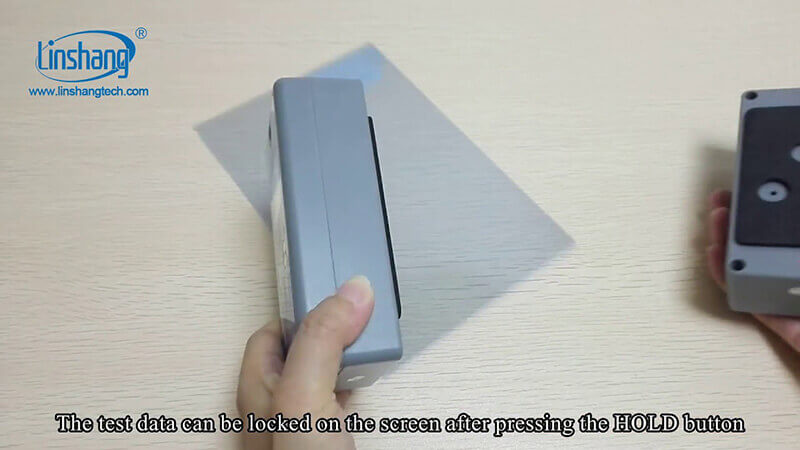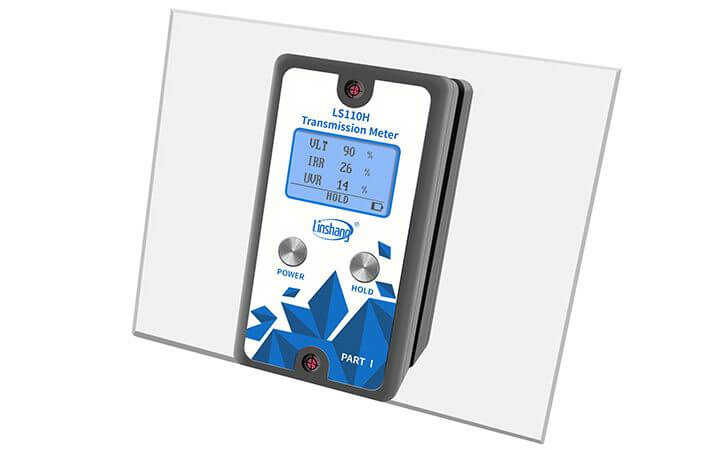
LS110H Split Transmission Meter
Measure front windshield, window tint, window film
Split design, suitable for testing already installed glass or larger materials
Simultaneous testing of VLT, IRR, UVR
Linshang LS110H split transmission meter uses a split design. The instrument consists of a main part (PART I) and an auxiliary part (PART II). It is suitable for testing various solar films, automobile glass and installed door and window glass. The window tint checker can measure visible light transmittance, infrared and ultraviolet rejection rate at the same time. The split transmission meter is easy to operate and easy to read.
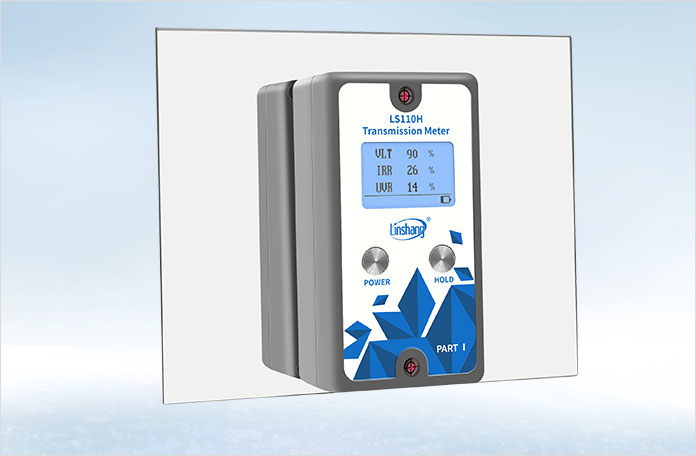
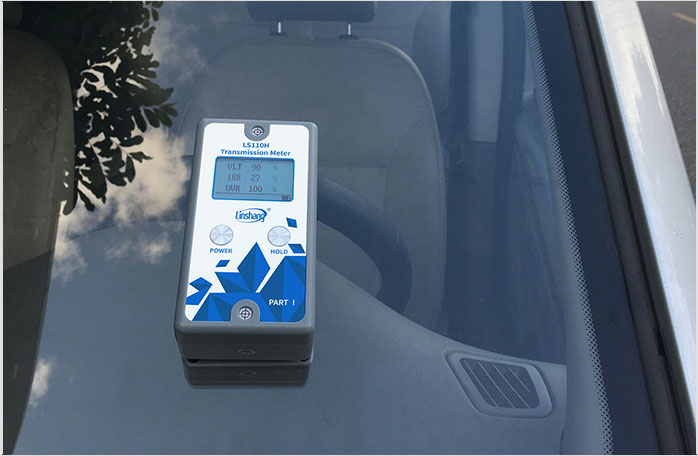
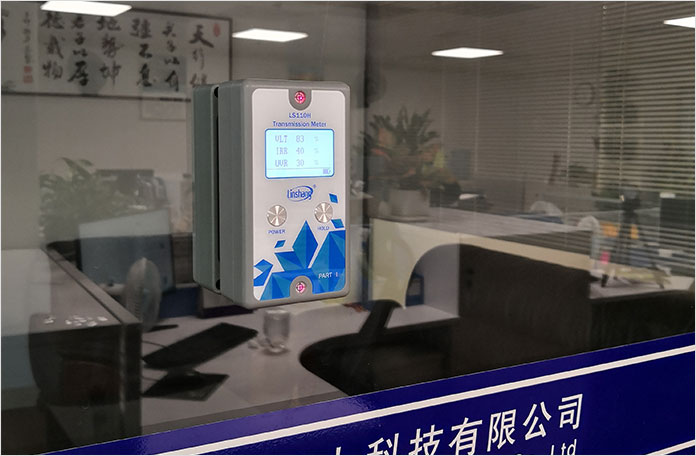
Parameters
| Parameter | Value |
|---|---|
| UV peak wavelength | 365nm |
| Visible light | 380-760nm (conform to CIE photopic luminosity function) |
| IR peak wavelength | 1400nm |
| Resolution | 0%---10%: 0.1% 10%---100%: 1% |
| Measurement accuracy | ± 2% (colorless and uniform transparent materials) |
| Test sample size | Great than 40mm * 40mm |
| Weight | 630 g |
| Dimension | 130mm * 70mm * 84mm(L*W*H) |
| Power supply | Built-in lithium rechargeable battery |
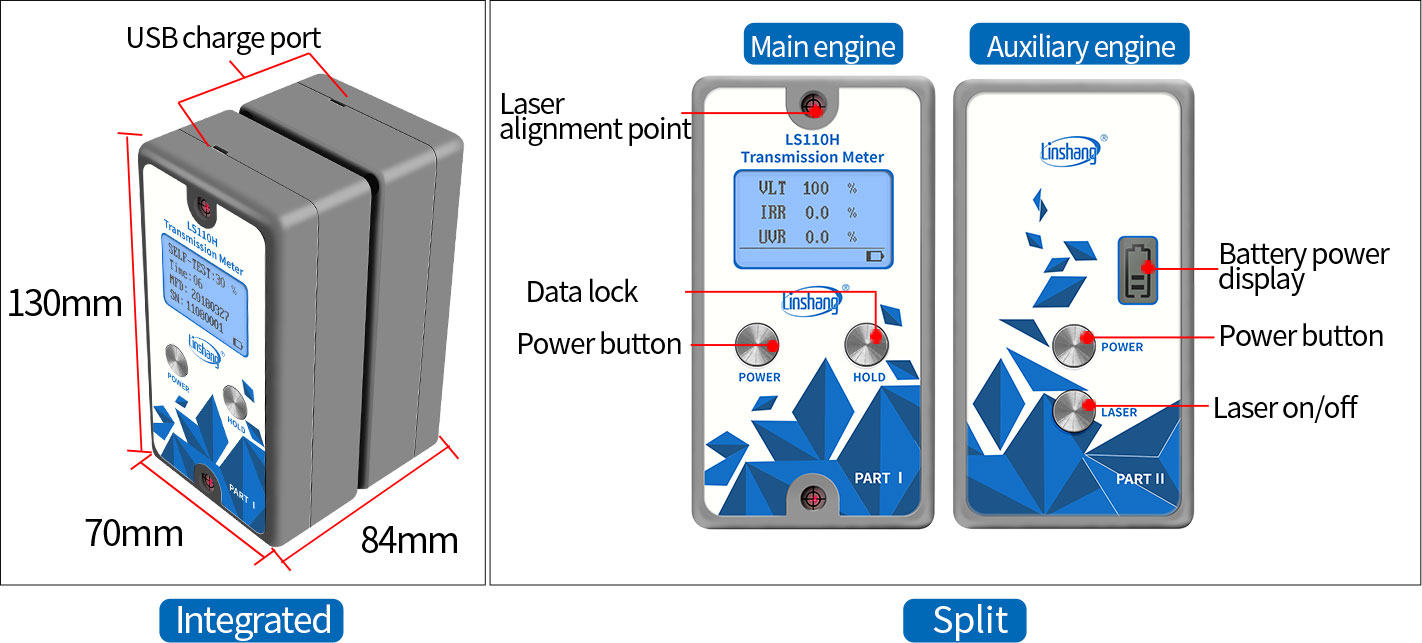
Features
Split design convenient for testing glass already installed
The tint meter adopts a split design, with super strong magnetic force between the main machine and the auxiliary machine. It is convenient for on-site testing of the optical transmission of automobile front glass, building glass and large-sized materials
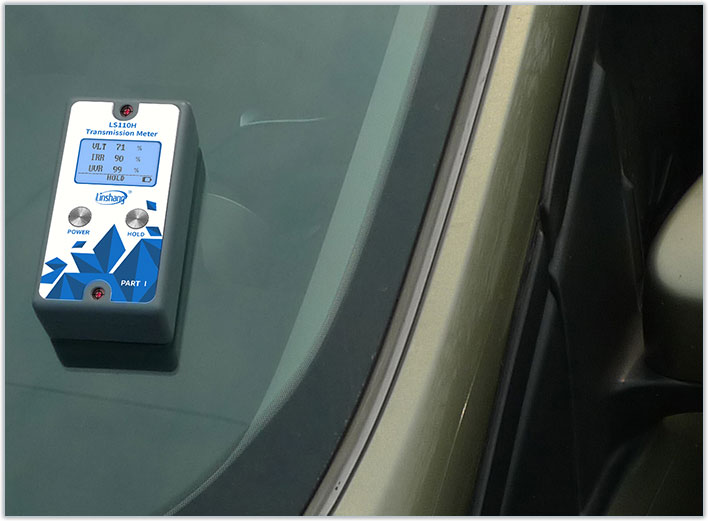
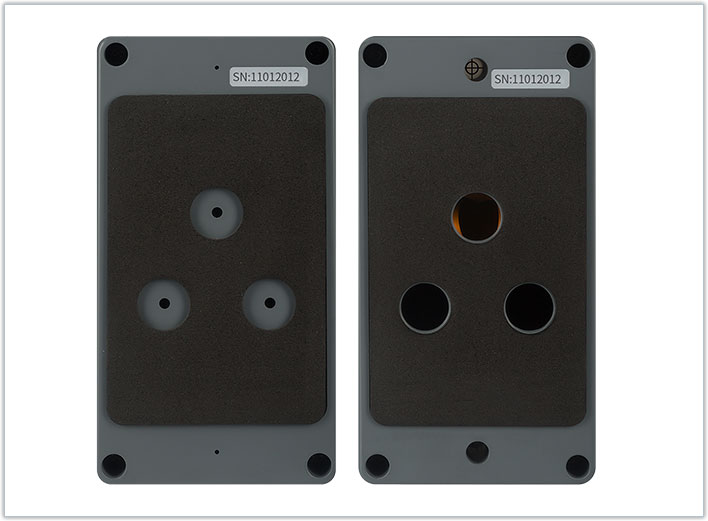
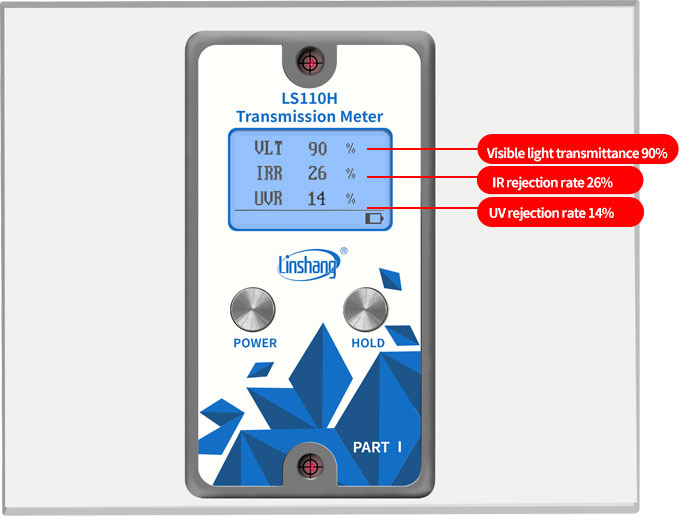
Three parameters can be measured at the same time
The LS110H split transmission meter can test the transmittance, ultraviolet and infrared rejection rate at the same time. With data lock function, the data remain on the interface after taking away the materials
Data locking
With a data lock function, the data can be kept on the display screen when the test sample is removed, making it easy to read the data
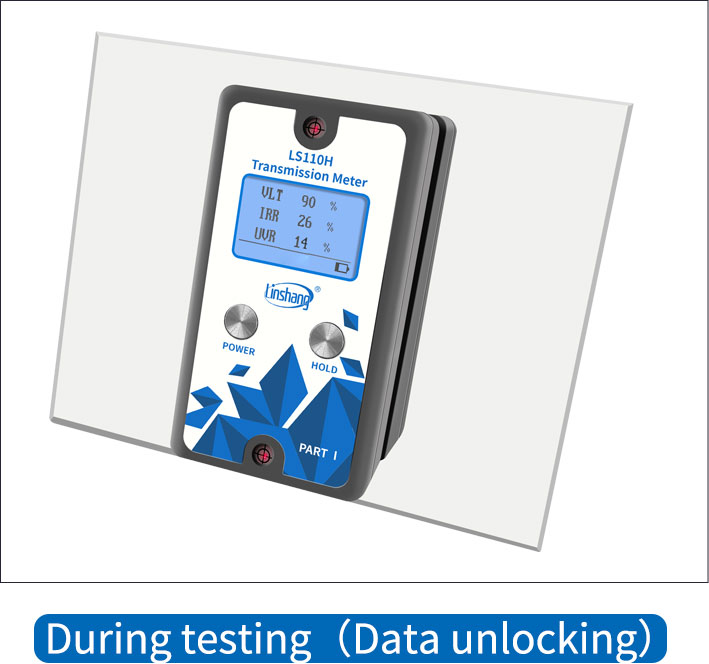
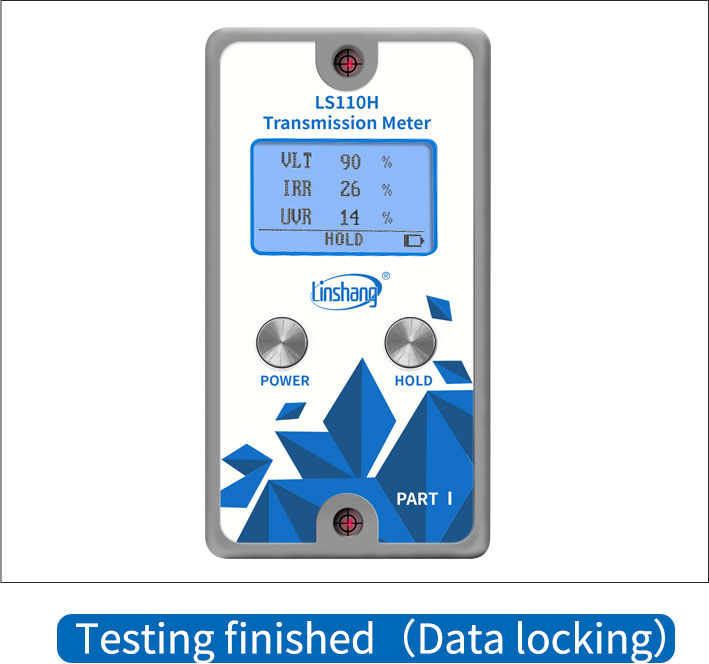
Rechargeable lithium battery powered
With built-in rechargeable lithium battery, there is no need to replace the battery, you can use one-to-two USB charging cable to charge the main and auxiliary machines at the same time
Parallel light path design
The automotive window tint meter uses a parallel light path design, which can test large thickness glass and ensure the accuracy of test data
Laser alignment to ensure accurate testing
The laser alignment function can ensure the precise alignment of the main and auxiliary machines during the measurement process. The accuracy of the instrument can be ensured
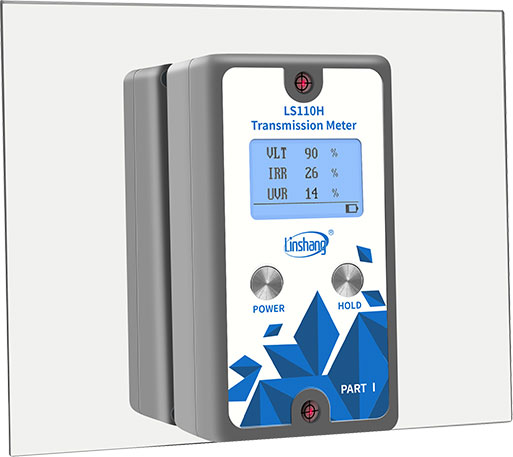
Qualifications and Standards

Packing
| No. | Description | Quantity | Unit |
|---|---|---|---|
| 1 | LS110H Split transmission meter | 1 | pcs |
| 2 | User Manual | 1 | pcs |
| 3 | Certificate / warranty card | 1 | pcs |
| 4 | Charger | 1 | pcs |
| 5 | Charge cable | 1 | pcs |
| 6 | Packing box dimension 25*21*7 cm(L*W*H) | 1 | pcs |
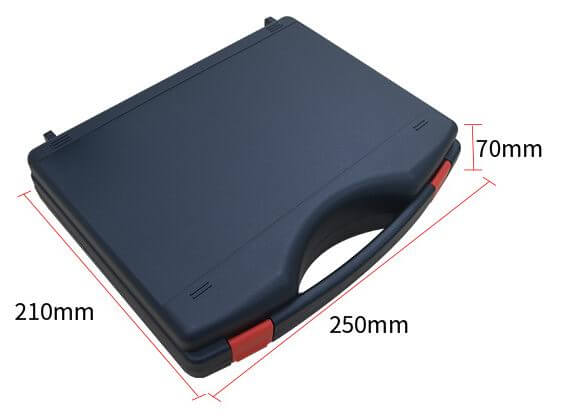
FAQ
-
1. The difference between LS110A (940nm) and LS110H (1400nm) split transmission meters
The main difference between LS110A and LS110H is that the peak wavelength of the built-in infrared light source, LS110A: 940nm, LS110H: 1400nm, these two wavelengths are more representative, most of the absorption film has a better rejection effect on 940nm infrared. The metallic film (insulation by reflecting heat) has a better rejection effect on 1400nm infrared. Please choose the appropriate model according to your own film.
-
2. What is the maximum glass thickness that LS110A/LS110H can measure?
The instrument use a parallel light path and the thickness of the test sample can reach more than 20mm. However, When measuring glass with a thickness greater than 20mm, the main body and auxiliary machine are not magnetic enough to be automatically adsorbed on both sides of the glass. The user need to hold the instrument for testing.
Your product information request
Please tell us a little about yourself and one of our salers will be in touch shortly.
